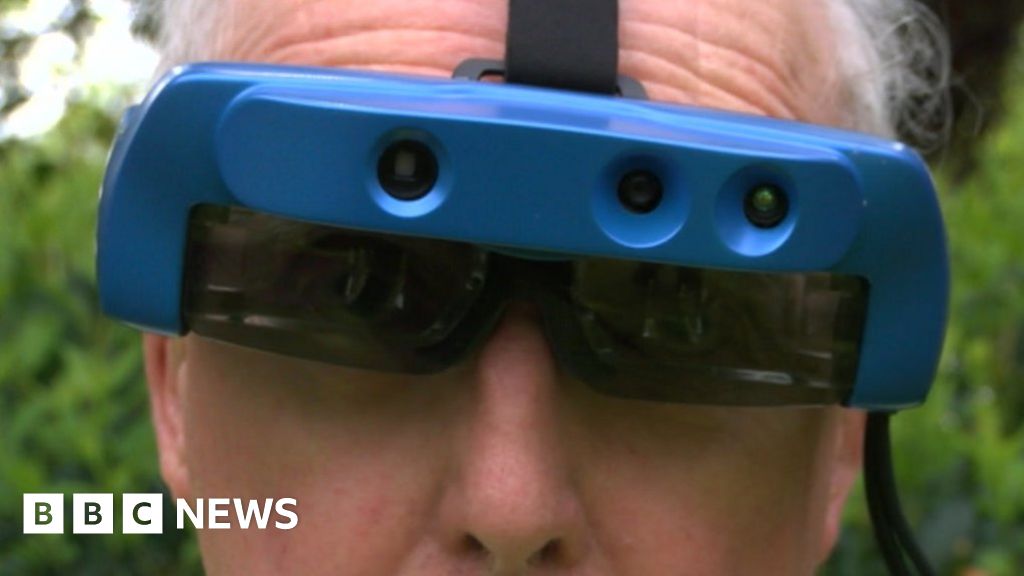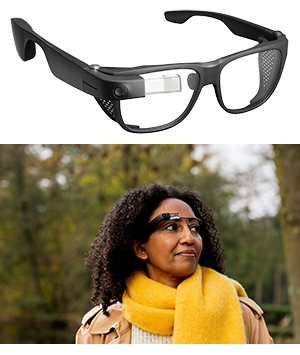Voice-Activated Assistive Devices: Empowering the Visually Impaired Through Innovation
Voice-Activated Assistive Devices: Empowering the Visually Impaired Through Innovation
Blog Article
Discover Advanced Assistive Gadgets for People With Aesthetic Impairments
The landscape of assistive innovation for people with aesthetic impairments is developing quickly, offering a variety of innovative tools that enhance freedom and engagement (Braille displays and notetakers). From smart glasses that effortlessly merge aesthetic input with auditory guidance to sophisticated navigating applications that redefine spatial understanding, these devices are reshaping possibilities. The latest improvements in Braille technology and voice-activated systems substantially add to accessibility. The implications of these advancements prolong far beyond simple capability; they test standard perceptions of disability and independence. What might this indicate for the future of addition and assistance?
Smart Glasses Innovations
Smart glasses stand for a considerable advancement in assistive innovation for people with visual disabilities. Outfitted with sensors and cams, clever glasses can catch real-time aesthetic details, which is after that processed and conveyed to the user through audio comments or haptic feelings.
Additionally, innovations in artificial intelligence have actually even more enhanced the capabilities of smart glasses. Artificial intelligence algorithms can acknowledge faces, read text, and recognize objects, making them important devices for day-to-day jobs. Individuals can receive acoustic cues that give context regarding their setting, fostering freedom and confidence.
In addition, the ergonomic layout and lightweight nature of several wise glasses make them suitable for long term usage, ensuring comfort while improving capability. As these tools continue to evolve, they hold the potential to reinvent the way individuals with visual disabilities experience their day-to-days live, connecting the space in between access and modern technology. The ongoing r & d in this field assurance to expand the opportunities for smart glasses, making them a vital element of modern assistive tools.
Navigation Apps and Tools
Numerous navigating applications and devices have become crucial sources for individuals with visual problems, significantly improving their ability to traverse strange settings. These technologies leverage GPS capability, audio hints, and real-time information to offer customers with specific navigating assistance.
One famous example is the Aira application, which connects individuals to trained representatives who can provide visual summaries of environments and navigating guidance through an online video clip feed. This service enhances the user's spatial recognition and self-confidence while browsing. Another noteworthy tool is Seeing Eye GPS, which uses voice-guided navigating and factors of rate of interest, allowing users to access essential information about their environments.

As technology remains to advance, the growth of a lot more sophisticated navigation tools guarantees to more empower individuals with aesthetic impairments, facilitating smooth mobility and assimilation into diverse atmospheres. Such technologies are crucial in advertising a much more inclusive culture.
Braille Technology Innovations
Recently, innovations in Braille innovation have actually significantly changed just how people with aesthetic disabilities access info and involve with the world around them. The advancement of portable Braille display screens has changed reading by permitting individuals to link wirelessly to computer systems, tablet computers, and mobile phones. These tools transform message into Braille in real-time, allowing smooth communication with digital material.
In addition, innovative Braille printers have actually emerged, improving the manufacturing of tactile materials. Modern embossers are faster and extra reliable, permitting the fast development of Braille documents and instructional materials. This efficiency minimizes the time and price related to creating Braille resources, making them extra available to companies and colleges.
Additionally, the combination of Braille with various other modern technologies, such as artificial intelligence and artificial intelligence, has opened up new avenues for tailored knowing experiences. Voice acknowledgment and synthesis technologies can complement Braille, offering an inclusive method to info dissemination.
As the need for comprehensive education and workplace settings grows, these technical improvements play a vital duty in empowering individuals with aesthetic impairments, ensuring they have equal accessibility to information and possibilities in various facets of life.
Wearable Devices for Self-reliance
A growing variety of wearable devices is enhancing self-reliance for individuals with aesthetic impairments, providing innovative solutions that improve navigation and everyday living. Braille displays and notetakers. These gadgets utilize innovative modern technologies to supply real-time comments and support, promoting autonomy in numerous settings

Wearable modern technology also consists of smartwatches that can be configured with accessibility features, enabling users to obtain alerts, track their locations, or perhaps call for assistance with the touch of a button. Some devices include synthetic intelligence to examine the environment, offering audio summaries of nearby items or individuals.
Voice-Activated Assistive Solutions
Leveraging voice-activated assistive solutions has changed the landscape of support for people with aesthetic problems, offering hands-free interaction and access to a range of tasks. These technologies utilize all-natural language handling and artificial knowledge to make it possible for users to perform daily activities via simple voice commands.

Furthermore, recent developments in voice acknowledgment accuracy have actually improved the individual experience substantially, accommodating varied accents and speech patterns. This inclusivity guarantees that even more individuals can take advantage of these innovations, cultivating a better sense of freedom.
Conclusion
In conclusion, the development of advanced assistive gadgets substantially boosts Smart glasses for the visually impaired the freedom and quality of life for people with visual problems. Technologies such as smart glasses, navigation applications, Braille technology, wearable gadgets, and voice-activated options jointly cultivate a more inclusive atmosphere. These innovations equip customers to browse their surroundings with self-confidence and engage even more totally with the world, inevitably advertising better ease of access and level playing fields for people dealing with aesthetic difficulties.
The landscape of assistive modern technology for people with aesthetic disabilities is evolving rapidly, offering a variety of ingenious tools that improve autonomy and engagement.Smart glasses represent a substantial development in assistive modern technology for people with visual disabilities. As these devices proceed to develop, they hold the possible to revolutionize the means individuals with visual problems experience their daily lives, connecting the void between accessibility and technology.In recent years, innovations in Braille technology have actually dramatically transformed how people with aesthetic disabilities access info and involve with the globe around them. These innovations empower customers to navigate their environments with confidence and involve more completely with the globe, eventually advertising higher accessibility and equivalent opportunities for people facing visual obstacles.
Report this page